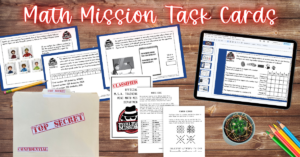The Need to Struggle is Real
 A few days ago, one of my children (who will remain nameless) was searching online for the answer to a history question. “Mom, I need help!” came the call. My frazzled child exclaimed that they had been looking forever for the answer to this question. In reality, they had been looking for just over a minute. The answer to the question hadn’t shown up in the very first line of the very first search result.
A few days ago, one of my children (who will remain nameless) was searching online for the answer to a history question. “Mom, I need help!” came the call. My frazzled child exclaimed that they had been looking forever for the answer to this question. In reality, they had been looking for just over a minute. The answer to the question hadn’t shown up in the very first line of the very first search result.
We all love instant gratification, and with modern technology, kids have come to expect it at every turn. It can feel frustrating when we can’t instantly find or understand something. Nobody likes to struggle, but valuable lessons are learned when challenges are faced. Parents and teachers want children to be independent. When we are too quick to jump in and rescue our kids, we risk creating dependence. How will kids learn to problem solve if there isn’t a problem left to solve?
One of my favorite things about teaching with escape rooms is that children are more willing to take on challenging tasks with positive attitudes. Escape rooms create a sense of excitement and even competition, making children work harder to solve problems. When you use escape rooms in your class, it is important to allow kids to struggle with the puzzles. Escape rooms are meant to be challenging! When we are too quick to jump in to offer assistance, we risk stealing that “Aha!” moment. You know the moment I’m talking about, when something clicks and it all starts to make sense. You can see the excitement and pride on their faces when they figure out a puzzle, and you can share in the celebration.
When you teach with escape rooms, puzzles or games, it is important to set children up for success.
- Make sure all of the necessary skills for solving the puzzles have been taught prior to using the activity. Escape rooms are great for reviewing skills and practicing skills.
- Encourage everyone to get involved. Collaboration and brainstorming solutions with peers helps everyone to feel empowered.
- Demonstrate a growth mindset and help students reframe any negative thinking.
You may find some students become frustrated, and that is ok! It is important to recognize at what point you should step in. You don’t want kids to give up, and it is important that kids know that it is ok to ask for help. Offer small hints and ask questions to see where students are at. Encourage them to brainstorm with their peers to find solutions.
There are many benefits to allowing kids to struggle:

- Struggle and even failure help children to develop a repertoire of problem solving skills and creative approaches to use when faced with future challenges.
- Struggling builds character! Tenacity and resilience are traits that can be developed by persevering through difficult problems.
- People who have learned to work through struggles tend to be more willing to step out of their comfort zones and less resistant to trying new things.
- Success is even sweeter when you have had to struggle to achieve it. You’ll see the pride on your students’ faces when they complete the challenge!
- That “Aha!” moment builds self-confidence, and you don’t get to have that moment without a little struggle and frustration along the way.
By allowing students to struggle with challenging tasks, we are setting them up to better face difficult challenges in their futures. While we aren’t grading students on these types of lessons, the skills that they may develop will benefit them throughout their lives.
We’d love to hear your examples of how overcoming challenges and struggling with academic tasks has benefited you, your children, or your students. Share in the comments!





